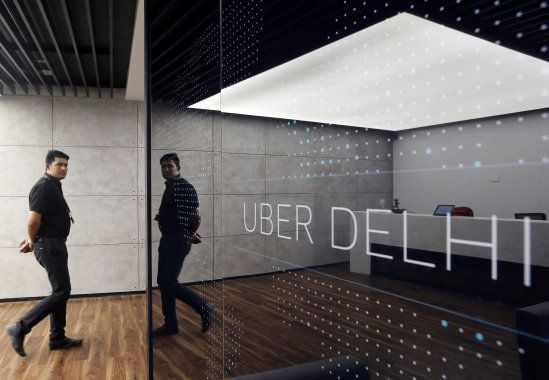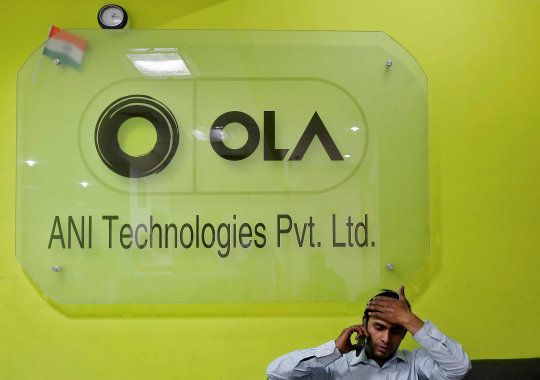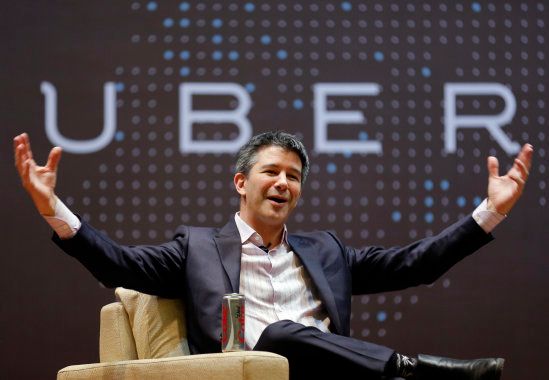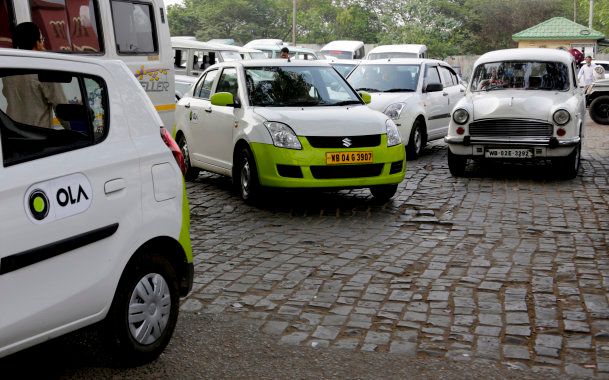
Shared rickshaws and auto-rickshaws are common across India, with the lower costs making them popular among passengers. Catching on to Indian commuter preferences, the two dominant ride-hailing taxi services OLA and Uber incorporated similar concepts in their apps in October last year when they launched OLA share and Uber Pool.
Both services have aimed to make rides more affordable for passengers by letting them share rides with other passengers. But some amount of confusion prevails and often passengers are still unsure when and why the cab drivers opt for a route that is different from the usual. It has been tough for drivers as well to make rigid customers understand some of the rules of shared taxi rides.
The Booking and The Algorithm
The process of getting a shared ride is easy. In the Uber app, you select Uber Pool and enter your destination. Once you have selected your destination you will see the amount charged for the ride.
If you accept, the request will go to all nearby cab drivers and when one of them accepts the ride, you will see the estimated time in which he will come to pick you up. If there is a co-passenger travelling with you, his or her name will also be displayed. However, you can't see where your co-passenger is going.

Uber says that their aim is to reduce the cost of the ride while introducing minimal delay in the time taken for passengers sharing the cab to reach their respective destinations.
"We try that, on an average, any rider would have 7-10 minutes of delay in their ride while picking up another rider. Our algorithm is reliant on the rider destination, the amount of delay, waiting time for the co-passenger, traffic on the alternative route and more," explained an Uber official. "Since we have launched our services fairly recently in India, we have a lot to improve. Our algorithm will learn and make the riding experience better as more UberPool rides are taken."
The process for selecting a ride is similar for OLA Share. But one key distinction is that OLA allows you to create a group of your own. If you do that, you will only be matched with a member of your group for sharing a ride. If a user does not belong to a group then she or he will be matched with anyone.

"The algorithm dynamically adapts the route, basis the first commuter's pick-up and drop-off point, as the main route; and the following bookings are matched accordingly, in real time. The most important objective of our algorithm is to make sure that a customer opting for Ola Share does not suffer a delay or deviation beyond a few minutes," said Anand Subramanian, Sr. Director, Marketing Communications, OLA Cabs.
But many customers, including this reporter, have experienced much longer delays than what is being conveyed by company officials. Customers have been taken on detours of as much as 7 kilometres. On average, passengers face a 15 minute-delay on shared rides. So, if you are short on time, it is always advisable to book an individual cab.
The Drivers
Uber has been running the Pool service in multiple countries after introducing it in Paris in 2014. In India, Uber first tested the service in Bengaluru and then extended it to Delhi and Pune. In June, they introduced UberPool in Mumbai, Kolkata, and Hyderabad.
Ola Share services are available in 7 cities in India as of now -- Delhi-NCR, Bengaluru, Chennai, Mumbai, Pune, Hyderabad, and Kolkata.
Uber Driver Rules
- UberPOOL allows up to two riders per pickup location. If two riders are picked up together, they must also be dropped off together
- If more than two riders show up at a pickup point, the driver can kindly request that they cancel that trip and request an UberX
- The drivers are instructed to wait for a minute before calling the UberPOOL rider. If the rider does not show up after another minute, the driver can cancel the trip and move on
- If the driver receives a second request after the trip has started, they can accept the request and the Uber app will redirect them
There are rules and guidelines in the place for the drivers. Still, many remain confused about the rules. The driver app doesn't let them see how far their passenger is until they accept the ride request.
Even though they can cancel a request if they feel that the journey will delay the passengers already in the car, most drivers don't do it because of the fear of low ratings. For the same reason, they tend to wait for the passengers to arrive for longer duration even though there is a two-minute time limit in both the services.
OLA driver rules for OLA Share
- We have incorporated a 2 minute waiting time for every co-passenger to board the cab. The time starts once the cab reaches the pick-up point. The booking is automatically cancelled if a co-passenger is unable to board the cab, in the given waiting time.
- A driver is advised to cancel a booking only if a passenger is taking too long to board the cab or is unsure about his/her pick up location and it might affect the on-road experience of another passenger.
- The driver can get off the OLA Share platform and still take requests for OLA Prime and OLA Mini.
While the algorithm should be taking care of which drivers should get the request, a lot of the times the pickup point is far from the actual route. This is annoying for the driver, the requester and the co-passenger as well. Frequent trainings and more detailed driver app will help the cause a lot in terms of sharing.
The Riders
The drivers are not the only ones still grappling with the rules of ride-sharing, riders too are unaware of the rules and are often disinclined to follow them, creating an unpleasant experience for other passengers.
UberPool rider rules
- The rider needs to enter their destination when they request the trip, so the app can match them with other riders heading in the same direction
- Each rider can have only one destination and they can't change their pick-up location or destination after the request
- The average time added to an UberPOOL trip is less than 5 minutes
- Each UberPOOL rider can bring one additional passenger along
- When the rider finds a match, they get notified of their co-rider's first name
- UberPOOL riders cannot prearrange a trip, since sometimes their best match may be with another drive-partner

This reporter has had personal experience of co-passengers being late or requesting the driver to take them much beyond the entered destination. Some even threatened the driver with low ratings or an outright refusal to pay the fare.
OLA Share Passenger Rules
- The passenger has to enter the destination before booking OLA Share.
- The wait time for the passenger is two minutes. Once the cab arrives at the pick-up point, the passenger should board it within the waiting time limit.
- The passenger can't change the destination during the ride.
- OLA Share allows a maximum of 2 booking per ride.
It is only reasonable for riders to be understanding and walk some distance from their homes if their lane is not car friendly.

Conclusion
There is an environmental aspect to ride sharing that is important and cannot be discounted. Uber claims that almost 1,50,000 people share rides on its app every week. Which translates into a reduction of 2,128 tons of CO2 emissions so far. OLA says that since the launch of its sharing services, it has prevented 4,800 tonnes of CO2 from entering the atmosphere.
Both platforms are capable of more efficient shared rides but a sub-par algorithm, driver misunderstandings and ride delays often make riders steer clear of ride-sharing services.
Other ride-sharing services in India include Let's Ride, Orahi, and Poolcircle but the scale of their operations is not as big as Uber or OLA.